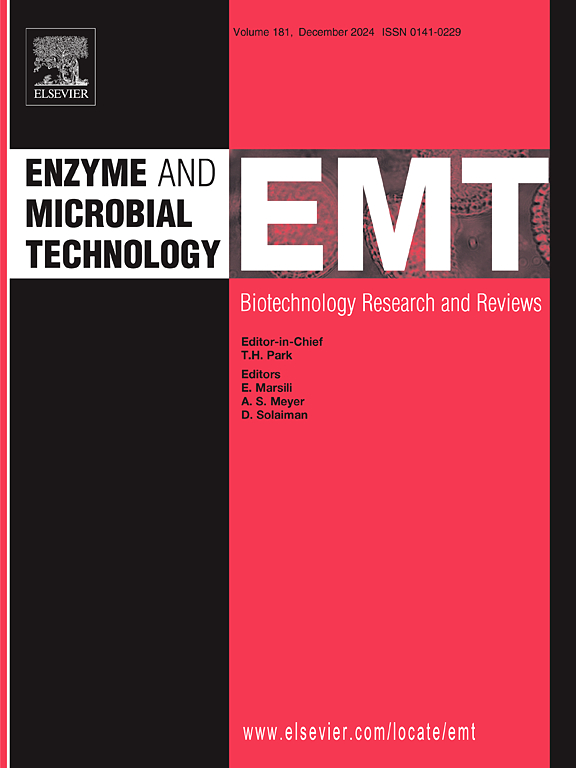Innovative nanosensing methods for lysozyme identification
IF 3.7
3区 生物学
Q2 BIOTECHNOLOGY & APPLIED MICROBIOLOGY
引用次数: 0
Abstract
Lysozyme (LYZ) is a critical enzyme recognized for its significant antimicrobial properties, playing an integral role in the immune response and being implicated in various diseases, including infections and inflammatory conditions. Traditional detection methods for LYZ, such as enzyme-linked immunosorbent assays (ELISA) and spectrophotometric techniques, often encounter limitations regarding sensitivity, specificity, and time efficiency. In light of these challenges, there has been substantial advancement in the development of novel biosensor technologies over the past two decades, particularly those that incorporate nanomaterials. These innovative biosensors demonstrate enhanced performance, facilitating rapid and accurate detection of LYZ at low concentrations. This paper aims to provide a comprehensive overview of recently developed biosensors specifically for LYZ, highlighting their design, functionality, and applications in clinical diagnostics and research. Unlike previous reviews, we place a distinct emphasis on the clinical importance of LYZ and its role in various diseases, thereby elucidating its significance in health and disease contexts. Additionally, we will explore the implications of advanced detection methods, particularly those utilizing nanomaterials, for enhancing our understanding of LYZ-related pathologies. By focusing on nanoscale detection techniques, which have not been thoroughly addressed in existing literature, we underscore the transformative potential of these biosensors in LYZ detection. This approach not only contributes to improved disease management but also informs therapeutic strategies, setting our review apart from prior works.
溶菌酶鉴定的创新纳米传感方法
溶菌酶(LYZ)是一种重要的酶,因其显著的抗菌特性而被公认,在免疫反应中起着不可或缺的作用,并与包括感染和炎症在内的各种疾病有关。传统的LYZ检测方法,如酶联免疫吸附试验(ELISA)和分光光度法技术,经常遇到灵敏度、特异性和时间效率方面的限制。鉴于这些挑战,在过去的二十年里,新型生物传感器技术的发展取得了实质性的进步,特别是那些结合纳米材料的技术。这些创新的生物传感器表现出更高的性能,有助于在低浓度下快速准确地检测LYZ。本文旨在全面概述最近开发的LYZ生物传感器,重点介绍它们的设计,功能和在临床诊断和研究中的应用。与以前的综述不同,我们特别强调LYZ的临床重要性及其在各种疾病中的作用,从而阐明其在健康和疾病环境中的重要性。此外,我们将探讨先进的检测方法的意义,特别是那些利用纳米材料,以提高我们对lyz相关病理的理解。通过关注纳米级检测技术,这在现有文献中尚未得到彻底解决,我们强调了这些生物传感器在LYZ检测中的变革潜力。这种方法不仅有助于改善疾病管理,而且为治疗策略提供信息,使我们的综述与先前的工作不同。
本文章由计算机程序翻译,如有差异,请以英文原文为准。
求助全文
约1分钟内获得全文
求助全文
来源期刊

Enzyme and Microbial Technology
生物-生物工程与应用微生物
CiteScore
7.60
自引率
5.90%
发文量
142
审稿时长
38 days
期刊介绍:
Enzyme and Microbial Technology is an international, peer-reviewed journal publishing original research and reviews, of biotechnological significance and novelty, on basic and applied aspects of the science and technology of processes involving the use of enzymes, micro-organisms, animal cells and plant cells.
We especially encourage submissions on:
Biocatalysis and the use of Directed Evolution in Synthetic Biology and Biotechnology
Biotechnological Production of New Bioactive Molecules, Biomaterials, Biopharmaceuticals, and Biofuels
New Imaging Techniques and Biosensors, especially as applicable to Healthcare and Systems Biology
New Biotechnological Approaches in Genomics, Proteomics and Metabolomics
Metabolic Engineering, Biomolecular Engineering and Nanobiotechnology
Manuscripts which report isolation, purification, immobilization or utilization of organisms or enzymes which are already well-described in the literature are not suitable for publication in EMT, unless their primary purpose is to report significant new findings or approaches which are of broad biotechnological importance. Similarly, manuscripts which report optimization studies on well-established processes are inappropriate. EMT does not accept papers dealing with mathematical modeling unless they report significant, new experimental data.
 求助内容:
求助内容: 应助结果提醒方式:
应助结果提醒方式:


